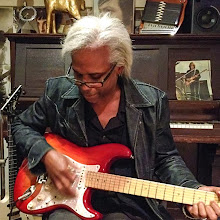How does one start an article about a legend? Well, in the case of Aaron Thibeaux "T-Bone" Walker, I think a film clip of him performing in London at Jazz at the Philharmonic in 1966, backed by such notables as Dizzy Gillespie and Coleman Hawkins, will do the trick ...
Of all the great twentieth-century blues guitarists, T-Bone Walker can easily be counted amongst the top five who have had the strongest influence on later generations of blues, rock, and jazz musicians. Not only did he write some of the most classic blues standards of all time (including "Call it Stormy Monday", which is still a popular cover tune today), but he was also part of that generation of blues artists who could easily bridge the gap between blues and jazz. Born in Linden, Texas on 28 May 1910 to two working musicians, his roots in the family trade were a blend of learning from his elders (including his mentor Blind Lemon Jefferson) and picking up what he could on the fly. From his early days as a boy, playing for change outside venues like Eddie's Drive-In, he honed his craft as a guitarist and singer. As a result, by the time he performed for the elite of London at Poplar Town Hall in 1966, his ability to improvise was legendary. As one of the innovators of electric blues guitar, his often complex style was an inspiration to the next generation of blues players, including B. B. King, Chuck Berry, and Albert King; and rock musicians such as Eric Clapton, Jimi Hendrix, and Jeff Beck worshipped the ground he walked on.
Here is another clip of Walker, this time performing in 1962 on Horst Lippman's German television show Jazz Gehört & Gesehen (Jazz Heard & Seen) ...


